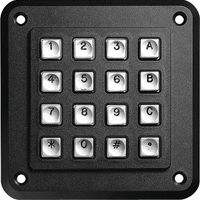Call +(254) 703 030 000 / 751 483 999 / 721 704 777
- Home
- Electronics Batteries
- Electronic Communication Equipment
.....Read More
Frequently Asked Questions
What are the best brands for audio-video equipment?
Please provide the topic you would like me to elaborate on.
How do I connect my TV to external speakers?
Connecting your TV to external speakers can significantly enhance your audio experience. There are several common methods, each with its own advantages.
One popular option is using an HDMI ARC (Audio Return Channel) connection. Many modern TVs and sound systems feature an HDMI ARC port, which allows audio to travel both ways through a single HDMI cable. Simply connect an HDMI cable from the TV's HDMI ARC port to the sound system's HDMI ARC port. This method often offers excellent audio quality and simplifies control, as you can typically control the sound system's volume with your TV remote.
Another common method is using an optical digital audio cable (TOSLINK). This cable transmits digital audio signals, providing high-quality sound. Connect one end of the optical cable to your TV's "Optical Out" port and the other end to your sound system's "Optical In" port. Remember to select the correct audio input on your sound system after connecting.
For older TVs or sound systems, RCA stereo cables (red and white connectors) can be used. These analog cables transmit stereo audio. Connect the red and white plugs from the TV's "Audio Out" ports to the corresponding "Audio In" ports on your sound system. While this method is simple, it may not offer the same audio fidelity as digital connections.
Some TVs and sound systems also support Bluetooth connectivity. This allows for a wireless connection, which can be convenient for a less cluttered setup. To connect via Bluetooth, put your sound system into pairing mode and then navigate to your TV's Bluetooth settings to search for and connect to the device.
Finally, a 3.5mm auxiliary (AUX) cable can be used to connect your TV's headphone jack to an AUX input on your sound system. This is a simple analog connection, often used for smaller speakers or headphones.
Before connecting, check your TV and sound system manuals to identify the available audio output and input ports and ensure you have the correct cables. Once connected, you may need to go into your TV's audio settings to select the external speakers as the preferred audio output.
What is the difference between HDMI and optical audio cables?
HDMI (High-Definition Multimedia Interface) cables transmit both high-definition video and multi-channel audio through a single cable, supporting formats like 4K video, Dolby Atmos, and DTS:X. They are commonly used to connect devices like Blu-ray players, gaming consoles, and streaming boxes to TVs or AV receivers. Optical audio cables, also known as TOSLINK, transmit only digital audio signals using pulses of light. They are often used for older audio equipment or soundbars, supporting formats like Dolby Digital and DTS 5.1, but not the higher bandwidth audio found in newer formats. The primary difference is HDMI's ability to handle both video and a wider range of high-resolution audio formats, while optical is limited to audio and typically older or less bandwidth-intensive formats.
How can I improve my Wi-Fi signal at home?
Improving your Wi-Fi signal at home involves several strategies. First, consider your router's placement. Central locations within your home, away from obstructions like walls and large appliances, are ideal. Elevating the router can also help, as signals tend to travel downwards.
Second, minimize interference. Other electronic devices, such as cordless phones, microwaves, and even baby monitors, can disrupt Wi-Fi signals. Try to place your router away from these devices.
Third, update your router's firmware. Manufacturers frequently release updates that can improve performance and security. Check your router's manual or the manufacturer's website for instructions on how to do this.
Fourth, consider upgrading your router. Older routers may not support the latest Wi-Fi standards (e.g., Wi-Fi 6), which offer faster speeds and better coverage.
Fifth, use a Wi-Fi extender or mesh system. For larger homes or areas with weak signals, a Wi-Fi extender can rebroadcast the signal, while a mesh system creates a network of interconnected nodes for seamless coverage.
Sixth, optimize your Wi-Fi channels. Interference from neighbors' networks can slow down your connection. Most routers allow you to change the Wi-Fi channel in their settings. Free Wi-Fi analyzer apps can help you identify less congested channels.
Finally, secure your Wi-Fi network with a strong password. Unsecured networks can be used by others, slowing down your connection.
What are the essential accessories for setting up a home theater system?
Setting up a home theater system involves several essential accessories to enhance your viewing and listening experience. Beyond the core components like a display (TV or projector), receiver, and speakers, consider these crucial additions: * **Cables:** High-quality HDMI cables are vital for transmitting audio and video signals without loss. For longer runs or specific setups, optical audio cables or speaker wire might also be necessary.
* **Surge Protector/Power Conditioner:** Protect your valuable electronics from power surges and fluctuations. A power conditioner can also help filter out electrical noise for cleaner audio.
* **Universal Remote:** Simplify control by consolidating multiple remotes into one. Many smart remotes can be programmed to operate all your home theater devices.
* **Speaker Stands/Mounts:** Proper speaker placement is critical for optimal sound. Stands or wall mounts help position speakers at ear level and reduce unwanted vibrations.
* **Subwoofer:** A dedicated subwoofer adds powerful bass, bringing movies and music to life with impactful low frequencies.
* **Acoustic Treatment:** For a truly immersive experience, consider acoustic panels or diffusers to minimize echoes and improve sound clarity, especially in larger or less-furnished rooms.
* **Streaming Devices:** If your TV isn't "smart" enough or you want access to a wider range of streaming services, a dedicated streaming device (like a Roku, Apple TV, or Fire TV Stick) is a must-have.
* **Cable Management Solutions:** Keep your setup tidy and organized with cable ties, sleeves, or raceways to prevent tangles and improve aesthetics.
How do I choose the right monitor for gaming?
Choosing the right monitor for gaming involves considering several key factors to enhance your experience.
First, display resolution is crucial. For sharp images, 1080p (Full HD) is a good starting point, but 1440p (QHD) offers a noticeable upgrade in clarity without being too demanding on your graphics card. For high-end systems and stunning visuals, 4K (UHD) provides the ultimate detail, though it requires powerful hardware.
Next, refresh rate determines how many times the screen updates per second, impacting smoothness. A 144Hz or higher refresh rate is highly recommended for competitive gaming, as it provides a much smoother and more responsive experience than a standard 60Hz monitor.
Response time is another critical specification, measured in milliseconds (ms). A lower response time (1ms or 2ms) minimizes motion blur and ghosting, which is particularly important for fast-paced games.
Panel type also plays a role. IPS (In-Plane Switching) panels offer excellent color accuracy and wide viewing angles, making them great for immersive gaming and content consumption. TN (Twisted Nematic) panels typically have the fastest response times and higher refresh rates, often preferred by competitive gamers, though they have narrower viewing angles and less vibrant colors. VA (Vertical Alignment) panels offer a good balance, with strong contrast and decent response times.
Finally, consider adaptive sync technologies like NVIDIA G-Sync or AMD FreeSync. These technologies synchronize the monitor's refresh rate with your GPU's frame rate, eliminating screen tearing and stuttering for a smoother gameplay experience. Ensure the monitor you choose is compatible with your graphics card's adaptive sync technology.
By carefully considering these factors, you can select a gaming monitor that best suits your needs and budget, providing an optimal and enjoyable gaming experience.
What is the best way to mount a satellite dish?
Please provide a specific topic or question you would like me to answer.
How do I set up a wireless router for optimal performance?
Setting up a wireless router for optimal performance involves several key steps. First, choose a central location for your router, ideally in an open space, away from obstructions like walls or large appliances that can interfere with the Wi-Fi signal. Avoid placing it near other electronics that emit electromagnetic waves, such as microwaves or cordless phones.
Next, ensure your router's firmware is up to date. Manufacturers frequently release updates that improve performance, security, and stability. You can usually find the update process on your router manufacturer's website.
To further optimize, consider using a strong Wi-Fi encryption method, like WPA2 or WPA3, to secure your network and prevent unauthorized access, which can slow down your connection. Also, change the default network name (SSID) and password to something unique and memorable.
If your router supports both 2.4 GHz and 5 GHz bands, utilize them appropriately. The 2.4 GHz band offers a wider range and better penetration through walls, making it suitable for devices further away. The 5 GHz band provides faster speeds but has a shorter range and is more susceptible to obstacles, ideal for bandwidth-intensive activities like streaming or online gaming in closer proximity to the router.
Finally, you might explore features like Quality of Service (QoS) settings, which allow you to prioritize certain types of traffic (e.g., video streaming over email) to ensure a smoother experience for critical applications. Regularly rebooting your router can also help clear its cache and improve performance.
What are the benefits of using a soundbar with a TV?
Using a soundbar with a TV offers several key benefits that significantly enhance the audio experience. Most modern flat-screen TVs, while excellent in picture quality, often have limited internal speaker space, resulting in thin, unimpactful sound. A soundbar, being a dedicated audio device, bypasses this limitation by providing clearer dialogue, richer bass, and a wider soundstage. This means that explosions in action movies will have more punch, music will sound fuller, and conversations will be easier to understand without needing to constantly adjust the volume. Many soundbars also offer virtual surround sound technologies, creating a more immersive listening experience by simulating audio coming from different directions. Additionally, soundbars typically have a variety of connectivity options, including HDMI ARC/eARC, optical, and Bluetooth, making them easy to integrate into most home entertainment setups and allowing for wireless music streaming from other devices. Their sleek, compact design also ensures they don't clutter your living space, making them a practical and aesthetically pleasing upgrade for any TV.
How do I secure my home network from unauthorized access?
Please tell me what you would like me to elaborate on.




